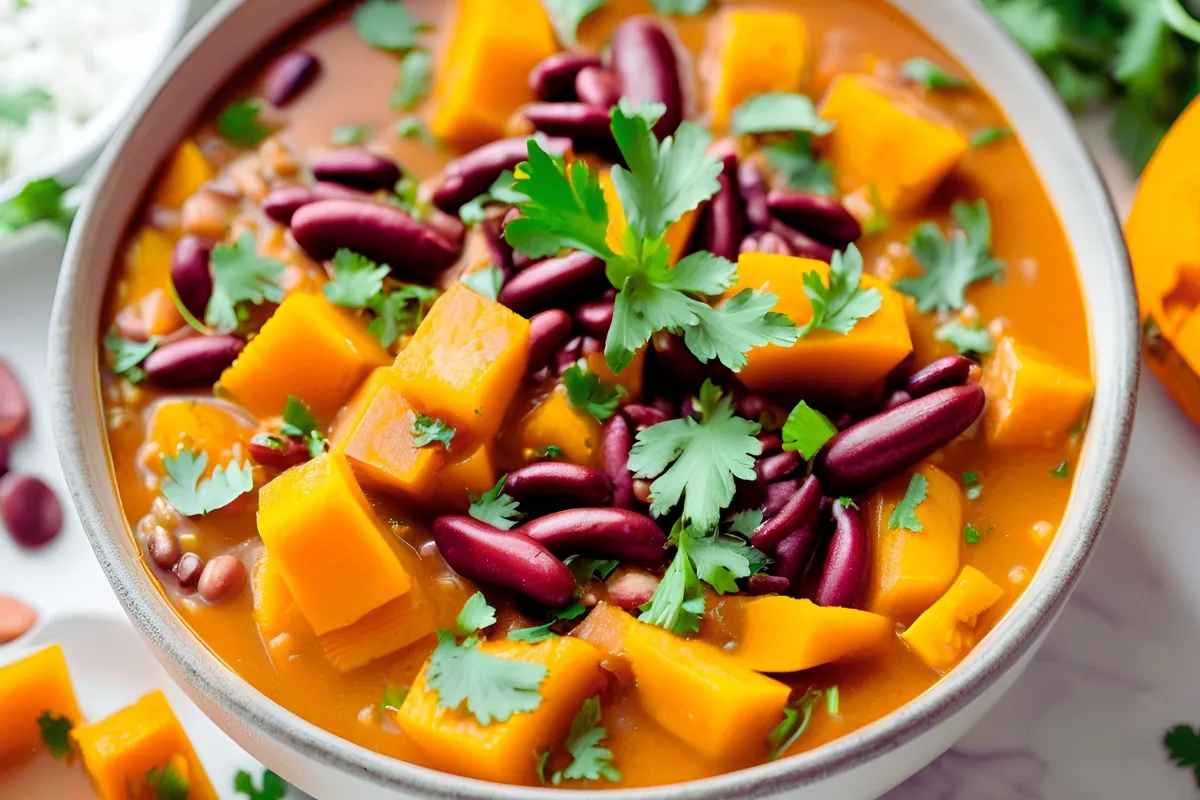Recipe Featuring Squash and Kidney Beans
Squash and kidney beans recipes might not seem like the most obvious duo, but they’re honestly a match made in culinary heaven. These ingredients not only complement each other in terms of flavor and texture but also pack a serious nutritional punch. Whether you’re looking to whip up a hearty stew, a vibrant salad, or even a spicy curry, combining squash and kidney beans can create magic in the kitchen. Stick around because, by the end of this, you’ll be ready to try your hand at a delicious recipe or two!
Why Combine Squash and Kidney Beans in Recipes?
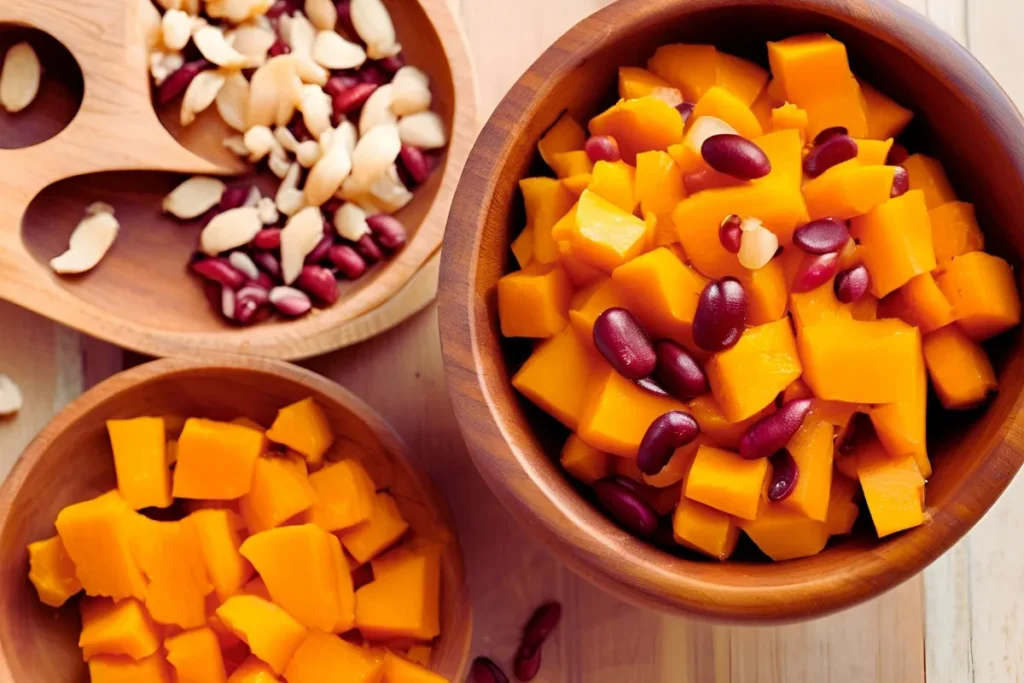
Nutritional Benefits of Squash and Kidney Beans Recipes
When it comes to eating well, squash and kidney beans are nutritional powerhouses. Squash, whether it’s butternut, acorn, or spaghetti, is brimming with vitamins like A and C, fiber, and antioxidants. It’s also naturally low in calories, which makes it a go-to for many health-conscious foodies.
On the other hand, kidney beans bring the protein! Just one cup delivers about 15 grams of plant-based protein along with essential minerals like iron and potassium. Kidney beans are also an excellent source of complex carbs and fiber, which keep you full longer and help stabilize blood sugar levels. Together, these ingredients create a balanced meal that checks all the boxes for both flavor and health.
Versatility of These Ingredients in Diverse Cuisines
One of the best things about squash and kidney beans recipes is their adaptability. From Latin-inspired stews to Indian curries or Mediterranean-style salads, these ingredients shine in all kinds of dishes. For example, squash can be roasted for a caramelized sweetness or puréed for a creamy texture, while kidney beans add heartiness and substance to almost any dish. Plus, they’re affordable and easy to find year-round, making them kitchen staples you’ll reach for time and time again.
Who Can Benefit from Cooking with Squash and Kidney Beans?
Suitable Diets: Vegetarian, Vegan, and Gluten-Free Options
These two ingredients are a dream for anyone following a vegetarian, vegan, or gluten-free diet. Squash is naturally gluten-free, and kidney beans offer plant-based protein, making them ideal for meatless meals. Whether you’re trying out “Meatless Mondays” or fully committed to a plant-based lifestyle, this combo is versatile enough to suit your needs.
Family-Friendly and Budget-Friendly Meals
Got a family to feed? Squash and kidney beans recipes are both filling and budget-friendly. A single butternut squash and a can of kidney beans can be stretched to make multiple servings, and they’re super customizable to please even the pickiest eaters. You can tone down the spices for kids or add a kick of heat for adults—this duo works either way.
Key Ingredients Overview
Types of Squash for Cooking
Not all squash is created equal, and the type you choose can make a big difference in your recipe. Butternut squash is creamy and slightly sweet, making it perfect for soups and stews. Acorn squash has a nuttier flavor and works well roasted as a side dish or in salads. Spaghetti squash is a fun, low-carb alternative to pasta, and it pairs beautifully with kidney beans in a tomato-based sauce.
Kidney Beans: Canned vs. Dried
When it comes to kidney beans, you’ve got two main options: canned or dried. Canned beans are super convenient—just rinse them well to reduce the sodium and you’re good to go. Dried beans, on the other hand, require a bit more prep (soaking and cooking), but they’re more economical and often have a firmer texture. Either way, they’re a fantastic addition to your pantry.
Understanding Kidney Beans and Their Preparation
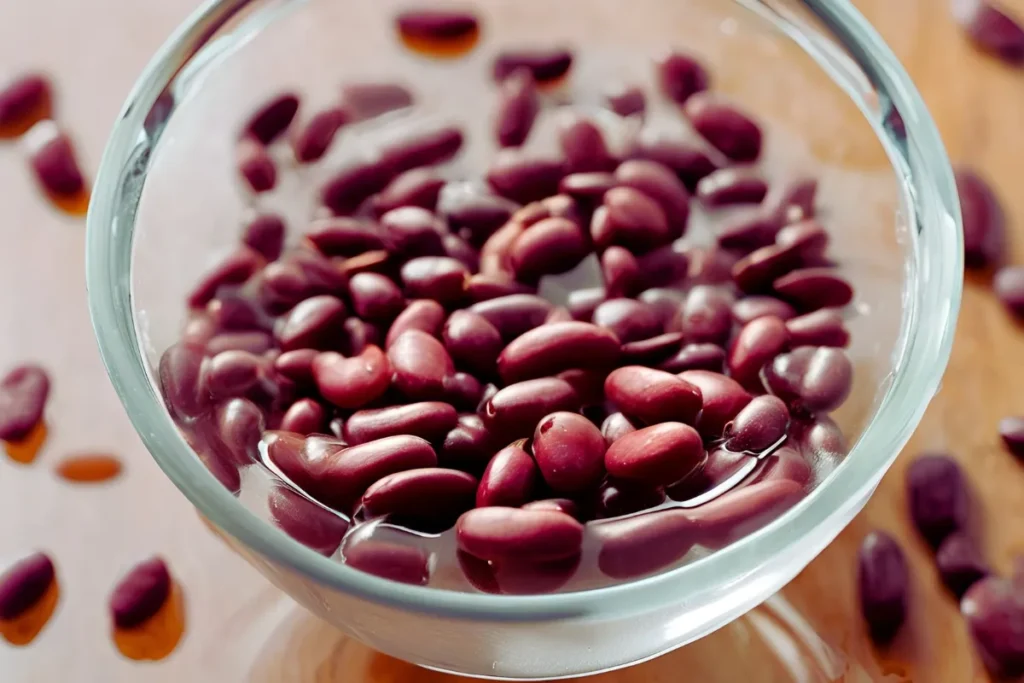
Why Can’t You Boil Red Kidney Beans Directly?
You might think you can toss dried red kidney beans into a pot and boil them like pasta, but here’s the thing—don’t. Raw or undercooked kidney beans contain a naturally occurring toxin called phytohaemagglutinin. This compound can cause severe stomach upset, including nausea and vomiting. Boiling alone doesn’t break down this toxin effectively, and in some cases, it can even concentrate it if the beans are only partially cooked.
To safely prepare dried kidney beans, it’s essential to follow a proper soaking and cooking process. This not only eliminates the toxin but also ensures the beans are tender and ready to absorb flavors.
How to Remove Toxins from Kidney Beans Safely
Proper Soaking and Cooking Methods for Dried Kidney Beans
Removing toxins is a straightforward process as long as you stick to the basics. Start by soaking your dried beans in plenty of water for at least 8–12 hours. This helps to leach out some of the harmful compounds. Once soaked, drain and rinse the beans thoroughly.
Next, boil the beans rapidly for at least 10 minutes. This high heat breaks down the toxin, making the beans safe to eat. After boiling, reduce the heat and simmer the beans for about 45–60 minutes until they’re tender. Be patient—this extra time ensures they’re safe and delicious!
Tips for Preparing Canned Kidney Beans Safely
Canned kidney beans don’t require soaking or boiling since they’ve already been cooked during processing. However, it’s a good idea to rinse them thoroughly under cold water to wash away any excess sodium or preservatives. This also improves their flavor, making them ready to toss into your favorite recipes.
Exploring the Nutritional Profile of Kidney Beans
Are Kidney Beans Good for You or Bad for You?
Health Benefits of Kidney Beans
Let’s talk about why kidney beans are considered a nutritional rockstar. They’re packed with plant-based protein, making them a fantastic meat substitute. Additionally, they’re high in fiber, which supports digestive health and can help lower cholesterol levels. For anyone watching their sugar intake, kidney beans have a low glycemic index, meaning they release energy slowly and help maintain stable blood sugar levels.
Kidney beans are also a great source of essential nutrients like folate, magnesium, and iron. Folate is especially crucial for pregnant women, while magnesium supports muscle and nerve function. Iron, as we all know, is vital for maintaining healthy blood cells and preventing fatigue.
Potential Concerns and Allergies Related to Kidney Beans
While kidney beans are undeniably nutritious, it’s important to be aware of potential concerns. Some people may experience digestive discomfort due to the high fiber content, especially if they’re not used to eating beans regularly. To minimize this, start with smaller portions and gradually increase your intake.
Allergies to kidney beans are rare but not unheard of. Symptoms may include itching, swelling, or digestive issues. If you suspect an allergy, it’s best to consult a healthcare professional before incorporating kidney beans into your diet.
Selecting and Preparing Squash for Recipes
Popular Varieties of Squash Used in Cooking
Squash is a kitchen chameleon. Butternut squash is a classic choice for creamy soups and stews thanks to its smooth texture and natural sweetness. Acorn squash, with its slightly nutty flavor, is perfect for roasting and stuffing. If you’re looking for something fun and different, spaghetti squash offers a low-carb alternative to noodles, while kabocha squash provides a rich, velvety base for curries.
Each variety brings something unique to the table, so feel free to mix and match based on your recipe.
Techniques for Preparing Squash for Dishes
Roasting, Sautéing, and Steaming Methods
- Roasting: This is hands-down one of the easiest and most flavorful ways to prepare squash. Simply cut your squash into cubes or wedges, toss with olive oil, salt, and spices, and roast at 400°F for about 25–30 minutes. Roasting brings out the natural sweetness and gives the squash a slightly caramelized edge.
- Sautéing: For a quick and easy side dish, sauté diced squash in a skillet with olive oil, garlic, and your favorite herbs. This method is perfect for weeknight meals when time is short.
- Steaming: If you’re looking for a healthier option, steaming is the way to go. It’s also great for preserving the squash’s natural flavor and nutrients. Simply place cubed squash in a steamer basket and cook for about 10–12 minutes until tender.
Each method has its perks, so choose the one that fits your recipe and mood.
Crafting the Perfect Squash and Kidney Bean Recipe
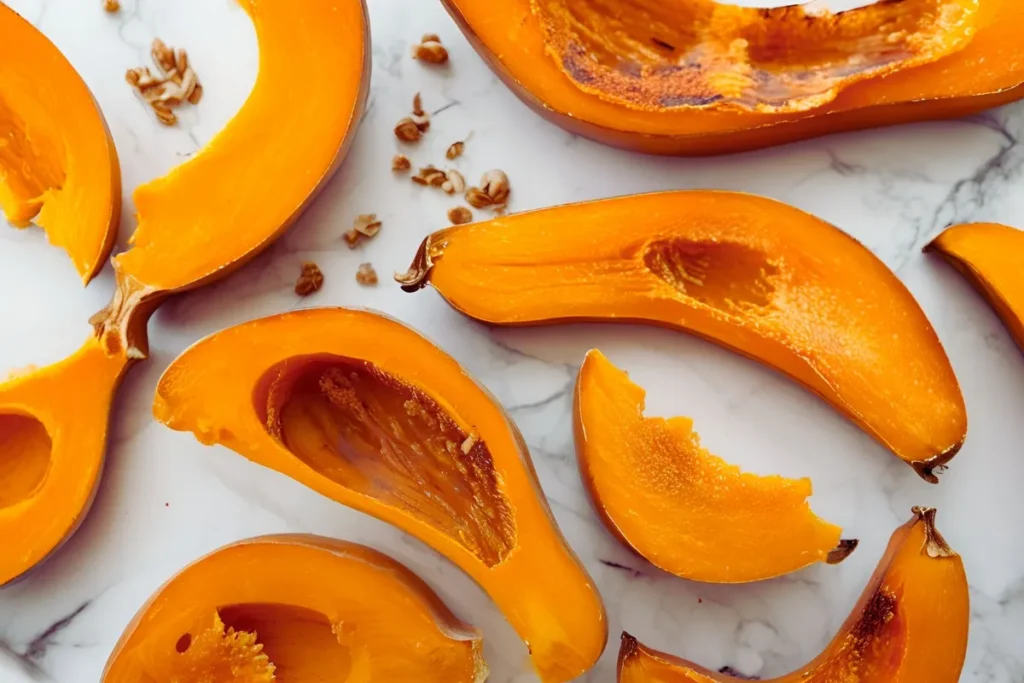
Step-by-Step Recipe for Squash and Kidney Bean Stew
This comforting stew is perfect for chilly nights or anytime you’re craving something hearty yet wholesome. It’s packed with flavor, easy to make, and brimming with nutrients.
Ingredients Needed for a Flavorful Stew
Here’s what you’ll need to get started:
- 1 medium butternut squash (peeled, seeded, and diced)
- 2 cups cooked kidney beans (or one 15-ounce can, rinsed and drained)
- 1 tablespoon olive oil
- 1 medium onion, diced
- 3 cloves garlic, minced
- 1 large carrot, chopped
- 2 celery stalks, diced
- 1 cup diced tomatoes (fresh or canned)
- 4 cups vegetable broth
- 1 teaspoon ground cumin
- 1 teaspoon smoked paprika
- ½ teaspoon chili powder (optional, for a bit of heat)
- Salt and pepper to taste
- Fresh parsley or cilantro for garnish
Cooking Instructions for Optimal Flavor and Texture
- Prep the Squash: Begin by peeling and cubing the squash. Set it aside.
- Sauté the Aromatics: Heat olive oil in a large pot over medium heat. Add the onion, garlic, carrot, and celery. Cook for about 5 minutes, stirring frequently, until the vegetables are soft and fragrant.
- Add the Spices: Sprinkle in the cumin, smoked paprika, and chili powder. Stir well to coat the vegetables with the spices.
- Simmer the Stew: Add the diced tomatoes, vegetable broth, and butternut squash. Bring the mixture to a boil, then reduce the heat to low. Cover and let it simmer for 20–25 minutes or until the squash is tender.
- Add the Beans: Stir in the kidney beans and let them heat through for about 5 minutes. Taste and adjust the seasoning with salt and pepper.
- Serve: Ladle the stew into bowls and garnish with fresh parsley or cilantro. Enjoy it as-is or with crusty bread on the side!
Enhancing the Flavor of Canned Kidney Beans
How to Add Flavor to Canned Kidney Beans Using Herbs and Spices
Canned kidney beans are super convenient, but let’s be honest—they can taste a little plain straight out of the can. The good news? It’s easy to transform them into something delicious with a few simple ingredients.
- Herbs and Spices: Add depth to your beans by seasoning them with smoked paprika, ground cumin, or oregano. Fresh herbs like thyme or rosemary also work wonders.
- Aromatics: Sautéed garlic and onions can instantly elevate the flavor of canned beans.
- Broth or Stock: Instead of water, simmer your beans in vegetable or chicken broth for a richer taste.
Suggested Add-Ins for Recipes: Onions, Garlic, and Broth
For a quick side dish, heat a little olive oil in a skillet and sauté minced garlic and chopped onions. Add your drained and rinsed kidney beans, a splash of broth, and your favorite seasonings. Let it cook for about 10 minutes, stirring occasionally, until the beans are warmed through and flavorful.
Recipe Variations to Try
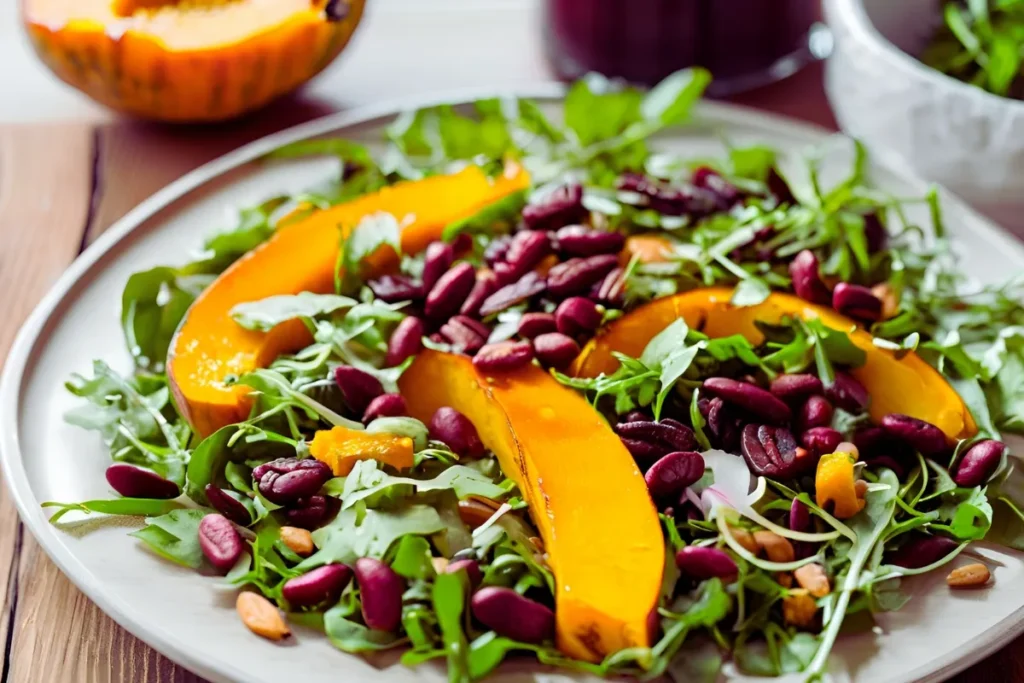
Spicy Squash and Kidney Bean Curry
This variation adds bold flavors to your stew by incorporating curry spices like turmeric, garam masala, and coriander. Swap the vegetable broth for coconut milk to create a rich, creamy base. Serve it over basmati rice for a complete meal.
Roasted Squash Salad with Kidney Beans
For something lighter, try tossing roasted cubes of squash with kidney beans, arugula, and a tangy vinaigrette. Add some crumbled feta or toasted pumpkin seeds for extra texture and flavor.
Future Trends in Squash and Kidney Bean Recipes
Increasing Popularity of Plant-Based Protein Sources
As more people embrace plant-based diets, kidney beans are gaining recognition as a nutrient-dense, affordable protein option. Expect to see them featured in creative recipes like veggie-packed Buddha bowls, meatless burgers, and high-protein soups.
Fusion Recipes Incorporating Kidney Beans
The rise of global fusion cuisine is inspiring new ways to use kidney beans. Imagine tacos filled with roasted squash, kidney beans, and chipotle sauce, or even a Middle Eastern-inspired stew with kidney beans, squash, and harissa. The possibilities are endless!
FAQs
Why Can’t You Boil Red Kidney Beans?
Red kidney beans contain phytohaemagglutinin, a naturally occurring toxin that can cause nausea, vomiting, and stomach pain if the beans are not properly prepared. Boiling kidney beans alone won’t destroy this toxin—in fact, it can sometimes make the problem worse if the beans aren’t fully cooked. This is why soaking and boiling dried kidney beans thoroughly is essential.
How Do You Remove Toxins from Kidney Beans?
The safest way to remove toxins is to soak the dried beans for 8–12 hours before cooking. After soaking, rinse the beans and boil them for at least 10 minutes at a rolling boil. Then, reduce the heat and simmer for 45–60 minutes until the beans are soft. Canned kidney beans are pre-cooked, so simply rinsing them is sufficient to remove any excess sodium or preservatives.
Are Kidney Beans Good for You or Bad for You?
Kidney beans are undeniably good for you when properly cooked. They are rich in protein, fiber, and essential nutrients like iron, folate, and potassium, making them a fantastic addition to a balanced diet. However, some people may experience digestive discomfort if they aren’t used to eating high-fiber foods. Additionally, raw or undercooked kidney beans should be avoided due to their toxic compounds.
How to Add Flavor to Canned Kidney Beans?
Canned kidney beans can be transformed with just a few tweaks. Start by rinsing them thoroughly to remove excess sodium. Then, sauté them with garlic, onions, and your favorite spices like cumin or paprika. You can also simmer them in vegetable broth or add a splash of balsamic vinegar for extra depth.
Can Squash and Kidney Beans Be Used in Cold Dishes?
Absolutely! Both squash and kidney beans are versatile enough to be featured in cold dishes like salads or grain bowls. Roasted squash pairs beautifully with kidney beans in a salad tossed with arugula, a citrus vinaigrette, and some crunchy seeds or nuts for texture.
Are There Special Squash Varieties for Soups or Stews?
Yes, certain varieties work better for soups and stews. Butternut squash is the most popular choice because of its creamy texture and sweet flavor. Acorn and kabocha squash are also great options—they hold their shape well in soups and add a nutty richness to the dish.
How Long Do Leftovers with Kidney Beans Last?
Leftovers with kidney beans can typically last 3–5 days when stored in an airtight container in the refrigerator. For longer storage, consider freezing the leftovers for up to 3 months. When reheating, make sure the dish is heated thoroughly to ensure food safety.

